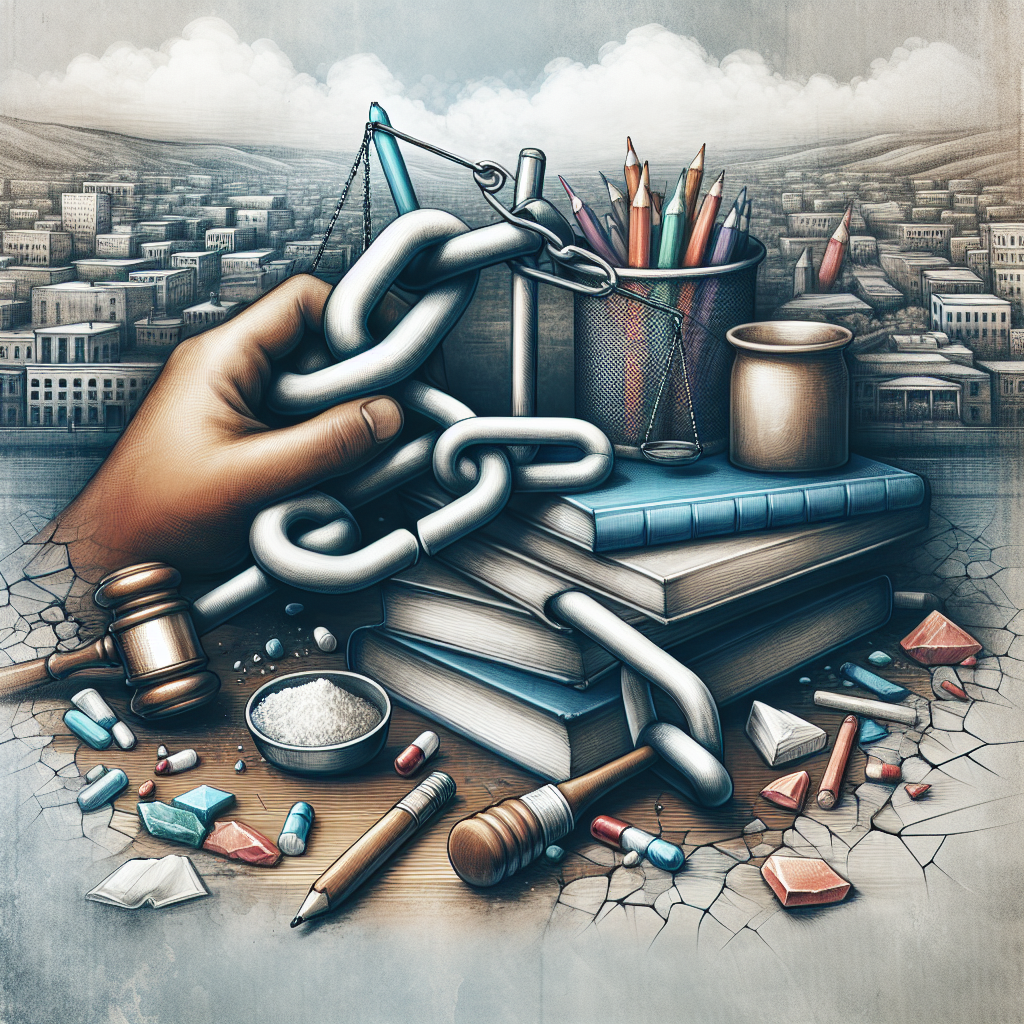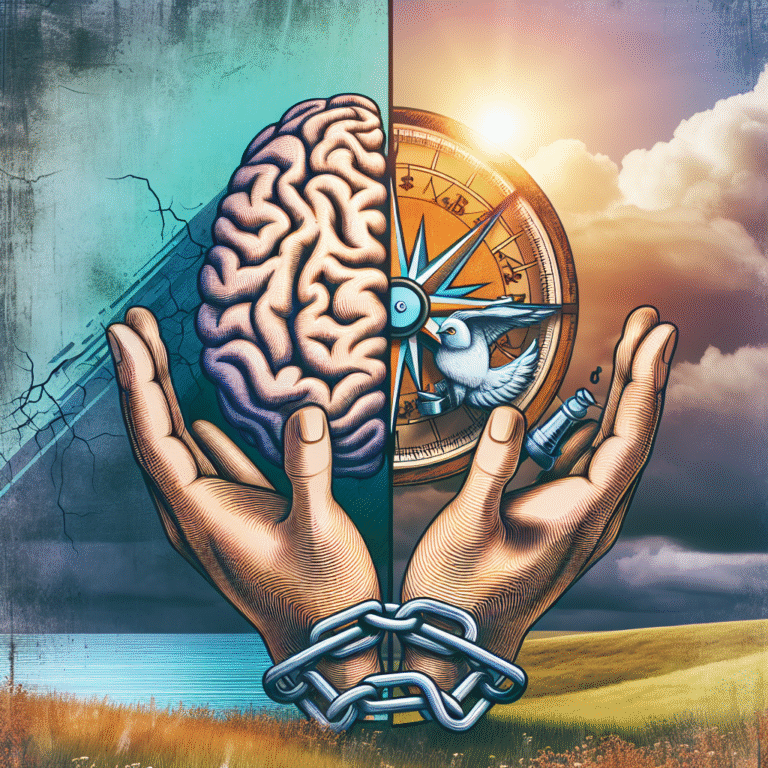
Introduction
The relationship between substance abuse and juvenile delinquency remains a significant concern, casting long shadows over communities and families alike. Every year, thousands of youth fall prey to substance misuse, and many find themselves embroiled in criminal activities as a consequence. Understanding this relationship is not just an academic pursuit; it’s essential for developing effective prevention and intervention strategies. In this exploration of the link between substance abuse and juvenile delinquency, we will dissect the underlying factors, examine real-world case studies, and illuminate pathways toward positive change.
What Is Juvenile Delinquency?
Juvenile delinquency refers to illegal acts committed by minors, typically under 18 years of age. These acts can range from vandalism and shoplifting to more serious crimes such as assault or drug offenses. The reasons behind these behaviors are complex and multifaceted, often involving a combination of socio-economic factors, peer influence, family dynamics, and personal circumstances.
The Rise of Substance Abuse Among Youth
Recent statistics indicate a troubling rise in substance abuse among adolescents, leading to an increasing number of juvenile delinquency cases. According to the National Institute on Drug Abuse (NIDA), nearly 60% of teens reported having tried alcohol, and over 40% have used illegal drugs by the time they graduate high school. The immediate question arises: How does this burgeoning crisis link to delinquent behavior?
Exploring the Link Between Substance Abuse and Juvenile Delinquency
Theoretical Frameworks
To effectively explore the link between substance abuse and juvenile delinquency, it is imperative to understand various theoretical frameworks that scholars have developed. For instance:
-
Social Learning Theory: This theory posits that delinquent behaviors are learned through interactions with others. Adolescents in environments where substance use is normalized are more likely to emulate these behaviors.
-
Strain Theory: According to this framework, when individuals experience stressors (like financial instability), they may resort to delinquency as a coping mechanism. Substance use can be one of those coping strategies.
- Labeling Theory: This theory suggests that once a youth is labeled as a delinquent or substance user, they may internally adopt this identity, leading to further delinquent behavior.
All these theories provide valuable insights into the complexities of juvenile behavior, establishing a foundational understanding for further investigation.
Case Study: The Impact of Peer Influence
A poignant example of the impact of peer influence is illustrated by the case of a 16-year-old named Mike from a suburban community. Raised in a stable family environment, Mike initially abstained from drugs and alcohol. However, after developing friendships with peers who frequently experimented with substances, he began to use marijuana and alcohol recreationally.
Analysis
Mike’s story underscores the significance of peer pressure in shaping behavior. As he sought acceptance within his new social circle, the connection between his substance use and subsequent involvement in vandalism became evident. This reflects the broader trend among youths: increased substance use often correlates with patterns of delinquent behavior.
The Role of Family Dynamics
Family plays a crucial role in either mitigating or exacerbating the risk of juvenile delinquency. Families with histories of substance abuse often produce offspring who replicate these patterns, leading to a vicious cycle of abuse and delinquency.
Case Study: The Atkinson Family
The Atkinson family faced significant challenges. The parents’ divorce led to emotional instability for their three children. The eldest son, Adam, turned to alcohol as a way to cope with his feelings of abandonment. This behavior eventually spiraled into theft and petty crimes to fund his addiction.
Analysis
The Atkinson family’s narrative illustrates how familial factors, such as instability and lack of support, can predispose youths to both substance abuse and delinquent acts. When monitoring family dynamics, intervention strategies can focus on providing emotional support and fostering healthy communication.
Socio-Economic Factors at Play
No discussion on juvenile delinquency and substance abuse is complete without considering socio-economic factors. Low-income neighborhoods, characterized by limited access to recreational activities and support systems, often see higher rates of both issues.
Table: Comparison of Substance Abuse Rates by Socio-Economic Status
| Socio-Economic Status | Substance Abuse Rate (%) | Juvenile Delinquency Rate (%) |
|---|---|---|
| High Income | 10% | 5% |
| Middle Income | 25% | 15% |
| Low Income | 45% | 35% |
Analysis
The correlation displayed in the table emphasizes the importance of addressing socio-economic conditions when discussing substance abuse and juvenile delinquency. Communities must work to provide resources and support systems that empower youth, breaking the cycle.
Prevention and Intervention Strategies
Addressing substance abuse and juvenile delinquency requires proactive measures. Effective strategies can be categorized into three primary areas: education, community involvement, and family support.
1. Education Programs
Educational initiatives focused on drug awareness can help inform youth about the dangers of substance use. School-based counseling programs provide adolescents with tools to resist peer pressure and make informed choices.
2. Community Engagement
Community initiatives that offer safe recreational spaces can deter youths from engaging in delinquent behaviors. Programs that include mentorship, sports, and arts can foster a sense of belonging and purpose.
3. Family-Centered Approaches
Interventions that include family therapy or counseling can help address underlying issues. Strengthening family bonds and communication can establish a support system that discourages delinquent behavior.
Conclusion
Exploring the link between substance abuse and juvenile delinquency reveals a complex web of interrelated factors. By understanding the psychological, social, and economic influences that shape youth behaviors, stakeholders can develop comprehensive prevention and intervention strategies. It is crucial that we engage with this issue on multiple levels—parents, educators, and community leaders must collaborate to create a supportive environment for our youth. Ultimately, through education, community efforts, and family support, we can break the cycles of substance abuse and juvenile delinquency, paving the way for healthier, more promising futures.
FAQs
1. What is the main link between substance abuse and juvenile delinquency?
Substance abuse often serves as a precursor to delinquent behavior. Adolescents who misuse substances are more likely to engage in activities that break the law, driven by the influence of peers, familial patterns, and socio-economic factors.
2. How can parents prevent substance abuse in their children?
Parents can prevent substance abuse by fostering open communication, setting clear expectations regarding drug use, and being actively involved in their children’s lives. Creating a supportive home environment is vital.
3. Are there any specific warning signs of delinquency related to substance abuse?
Warning signs can include sudden changes in behavior, withdrawal from family and friends, declining academic performance, or unexplained financial issues. Any significant shift in a child’s life warrants attention.
4. What role do schools play in addressing these issues?
Schools are critical in implementing educational programs about the risks of substance abuse and providing counseling services. They can also facilitate community activities that promote healthy lifestyles and constructive engagement.
5. Can community programs effectively reduce both substance abuse and juvenile delinquency?
Yes, community programs that offer resources, mentorship, and recreational activities can significantly impact reducing both substance abuse and juvenile delinquency rates among youths, fostering positive alternatives.
Through understanding and addressing the complex interplay between substance abuse and juvenile delinquency, we take crucial steps toward nurturing a healthier, more resilient generation. The future lies in our hands, and by working collectively, we can ensure a brighter tomorrow for our youth.













